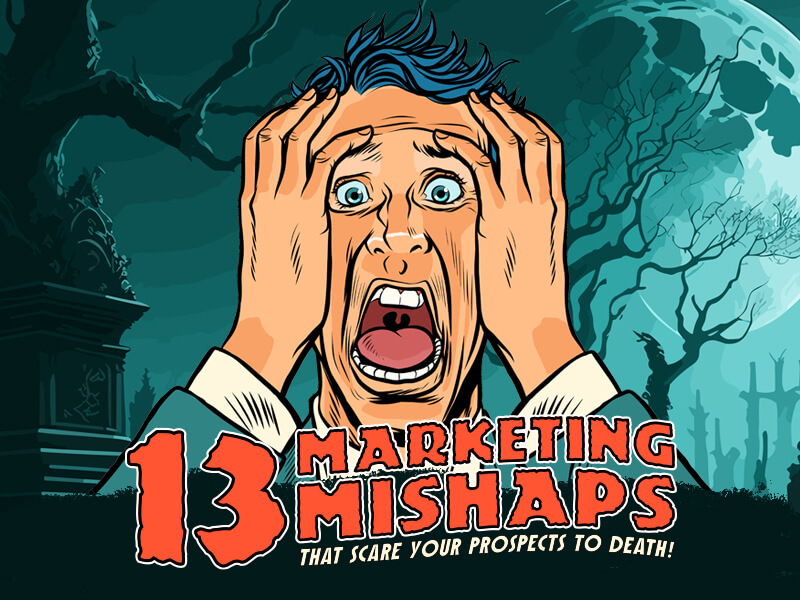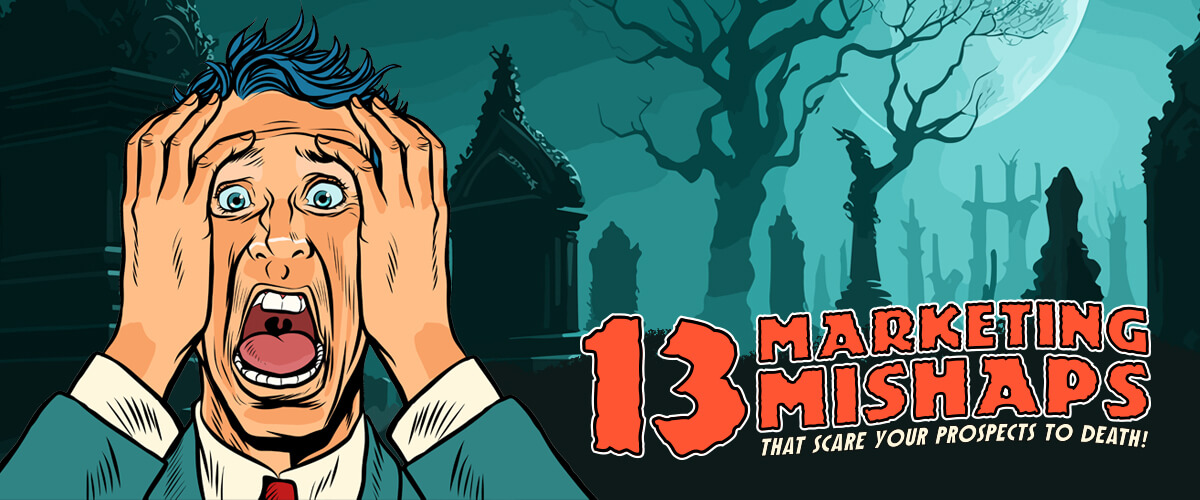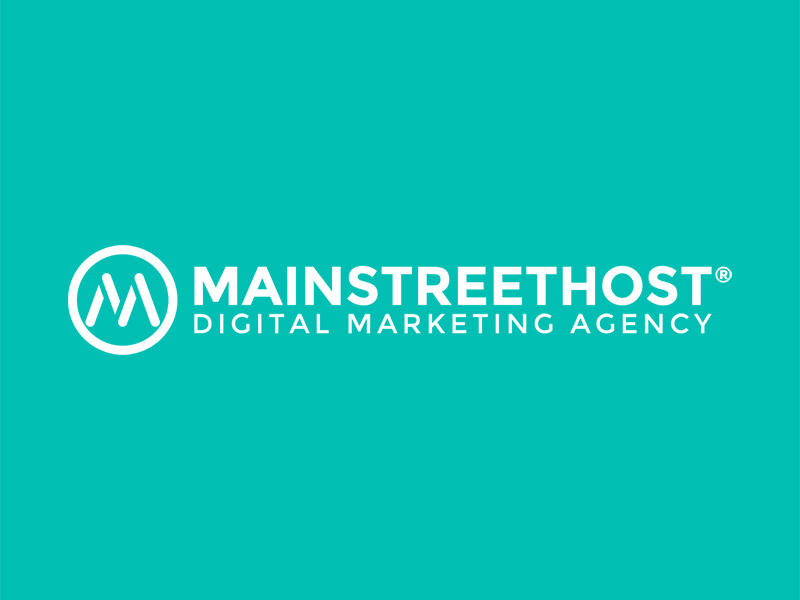From outdated copy to clunky, non–user-friendly websites, marketing mishaps lurk everywhere. And while fall might be the season for ghosts and ghouls, the last thing you want to do is frighten away the very people you’re trying to attract.
When someone knocks on your business’s proverbial door, they don’t want to be served tricks. If you fail to give customers what they’re looking for, don’t be surprised if they run off.
The good news? No matter how dead your marketing feels, you can revive it! By eliminating spooky marketing tactics, you just might be able to score yourself some new customers and bring your online presence back to life. 🧟♂️
1. Your website is not mobile-friendly
Over half of all global website traffic comes from mobile devices, and a site that isn’t mobile-friendly can send prospects running in the other direction before they even explore your homepage.
2. Your website is not secure (HTTPS)
Google has been pushing for an improved secure browsing experience for users for over 10 years… So, if your website is still not secure, that’s the real horror story! Check out our HTTPS checklist for more information.
3. Your website provides a poor overall user experience
Even if your website looks great, it may not be performing the way you’d like it to. Go through your site as if you are the customer to experience it for yourself.
88% of users are less likely to return to a site with a bad user experience. If your website traps visitors in confusing navigations, dead-end links, or slow-loading pages, they’ll be just as lost and frustrated as you are—and more likely to abandon ship.
4. There’s no clear purchase path on your website
A confusing purchase path isn’t just frustrating for customers—it’s downright frightening for your bottom line.
90% of users say a smooth checkout experience will determine if they purchase or not. If it’s not easy for someone to complete a purchase on your site, they’re far less likely to stick around to do it.
5. You’re overwhelming your audience
There can be a fine line between clingy and consistent. If your audience is constantly hearing from you—whether it’s emails, calls, or texts—familiarity can quickly turn into fatigue. This oversaturation can lead to lower engagement rates as your messages blur together and lose their sense of urgency or value—or worse, total unsubscription.
6. Your social media presence has vanished into the void
The one time people actually want an active presence is when it comes to a business online. And if you’re not active on social media specifically, consumers may eventually forget about your brand and are much less likely to purchase from you.
Whether it’s company announcements, UGC, or helpful tips, social media builds trust with consumers—in fact, 78% of consumers state that a brand’s social media presence has a large effect on whether or not they trust the brand. So, if you’re not showing signs of life online, your brand may as well be six feet under.
7. Your website isn’t updated
A lot changes from year to year. How can a prospect trust that your website’s information is accurate if it looks (and acts) like an ancient relic? 75% of users admit to judging a company’s credibility based on their website’s design. Not to mention that relevant and meaningful website updates are included in Google’s ranking factors.
So by not updating your website, you’re not only losing trust from prospects… you’re losing trust from search engines, too.
8. You’ve ghosted your prospects and customers
Your customers shouldn’t need a Ouija board to get a response from you. Over half of customers will switch to a competitor if they feel neglected by a company.
If a customer is reaching out to you, whether for a good or bad reason, a lack of response will give them (and others) a negative perception of your business.
9. Your approach is generic
People notice when they’re being spoken to directly. They also notice when they’re not.
71% of consumers expect personalization… and 76% get frustrated when they don’t get it. Treating every visitor the same, sending one-size-fits-all messages, or neglecting behavior-based targeting makes your brand feel like background noise rather than a potential meaningful connection—personalization is key.
Tip: Try creating buyer personas to improve your targeting and messaging!
10. Your landing pages have too many options
Having too many choices can make your landing page feel like a labyrinth. When a page offers too many paths forward, visitors hesitate, question, and often leave without choosing a path at all. Eliminate distraction by giving your prospects one goal to complete on each landing page.
11. You fail to deliver a clear message
Your brand shouldn’t be a mystery. If a prospect visits your website and has no idea what your business is, what you do, and why you’re better than a competitor, they’re not going to look for clues. If the information prospects need is hidden, 61% of consumers will search for a competitor with a more direct message.
12. You’re stuck in the past
Clinging to outdated strategies can make your marketing feel stale, even if your brand isn’t. If your competitors are adapting while you’re repeating the same playbook, it doesn’t take long before your relevance—and effectiveness—begins to fade.
13. You have more bad reviews than good
Nothing chills a prospect faster than a page full of poor reviews. If the first thing they see is a trail of consistently unhappy customers, you’ll have to work twice as hard to earn their trust—and sometimes, no amount of charm can raise that from the dead.
Don’t let these mistakes haunt you
If you find that you relate to more than a few of these, don’t worry. By focusing on building trust, improving customer experience, and fostering meaningful connections, you can clear out the cobwebs and build a brand experience that feels warm and welcoming—and maybe score yourself some glowing online reviews! 😉
It’s well worth the time and money to really understand prospective and current customers. When you prioritize their overall experience, you can say bye-bye to fright, and hello to delight.
So, take a moment to look at your current approach.
Where can you build more trust, ease, and connection? When you prioritize that, the only horrors you’ll face will be from scary movies, not scary marketing.




